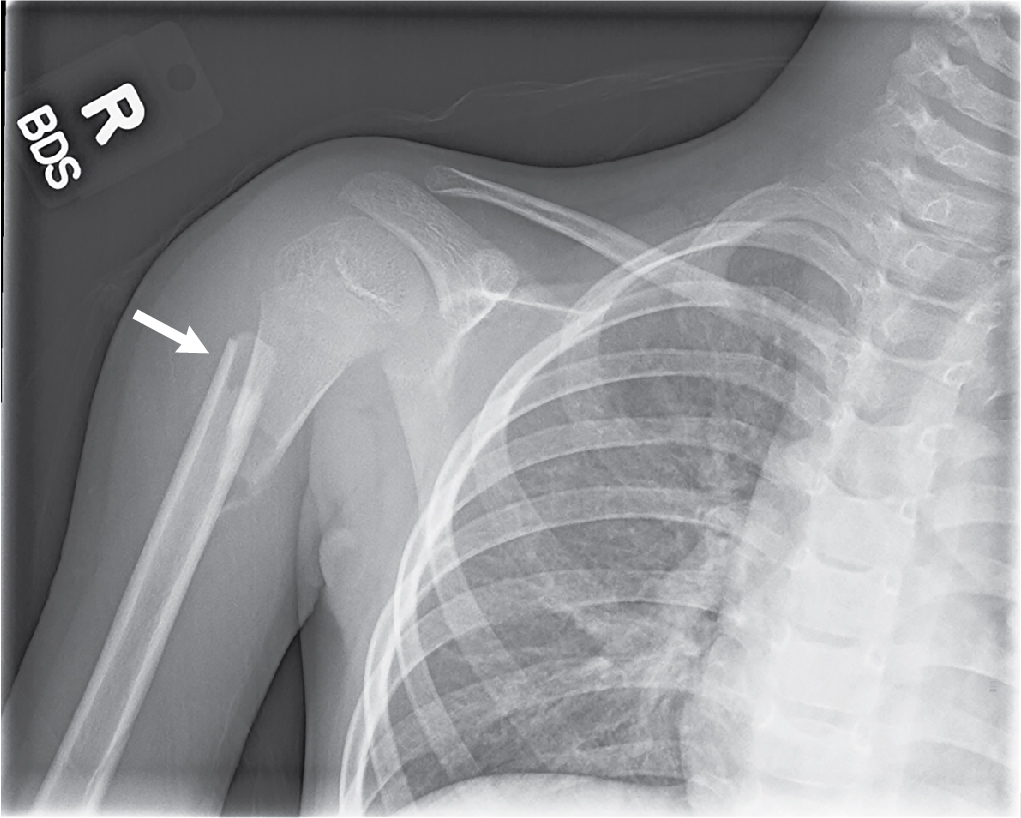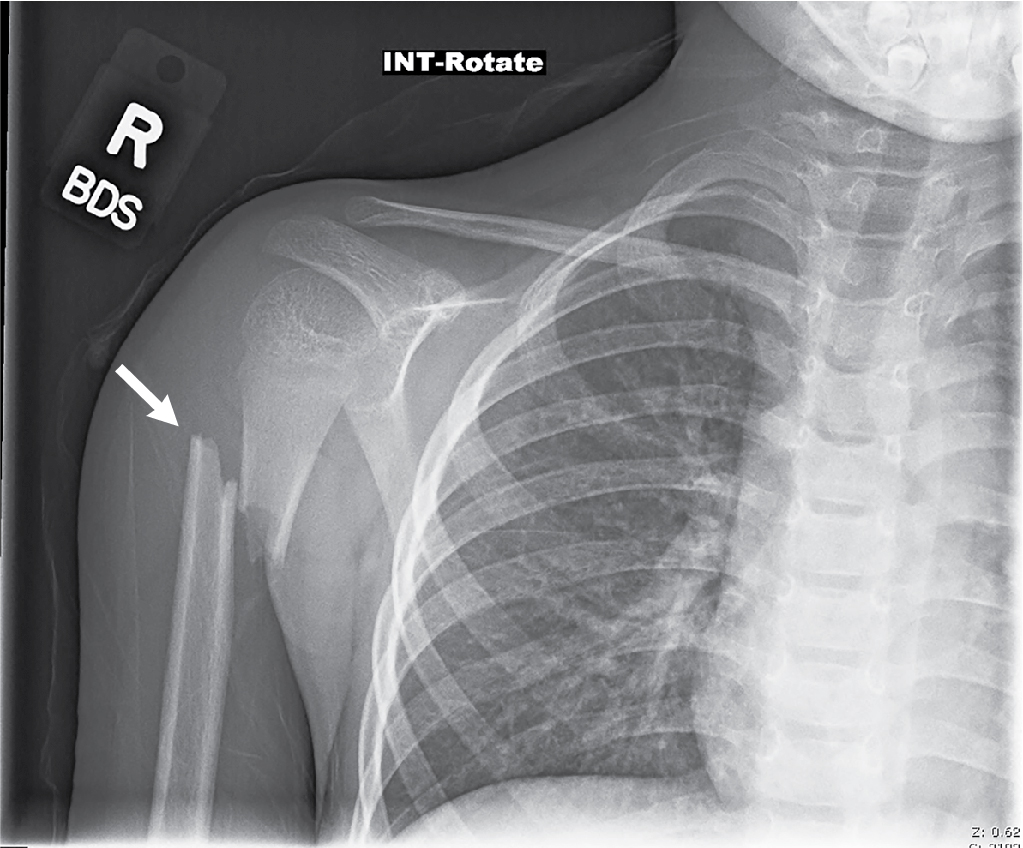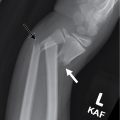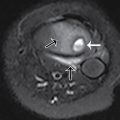Case presentation
A 6-year-old boy presents with right upper arm and shoulder pain after falling off a horse while riding at a brisk trot. There is no reported loss of consciousness and he denies neck pain, abdominal pain, back pain, or elbow pain. His vital signs are age appropriate and there is no obvious injury other than mild edema and tenderness of his proximal right humerus. There is no apparent weakness or numbness. He has brisk capillary refill and a strong radial pulse. Sensation is intact. There are no lacerations or abrasions of the skin.
Imaging considerations
Plain radiography
The classification of humerus fractures depends on their location: proximal physeal fractures are classified using the Salter-Harris Classification, with the majority being Salter-Harris type I or II fractures, whereas humeral shaft fractures are classified by angulation, displacement, and location. A child may not be able to indicate exactly where the source of their pain might be and shoulder imaging may be obtained rather than dedicated imaging of the humerus if a shoulder injury is initially suspected. The proximal humerus can be visualized with a shoulder series and typical views include anteroposterior (AP), scapular Y, and axillary views. , Two-view imaging (AP and lateral projections) of the affected extremity is generally sufficient when evaluating pediatric long bone injuries and is appropriate to diagnose humeral shaft fractures in these patients. , Comparative views are generally not indicated. Consideration should be given to imaging joints above and below an injury; humeral radiographs will generally adequately visualize the elbow and shoulder joints, but dedicated imaging of those sites should be performed if clinically indicated.
Prior to obtaining imaging, adequate pain control should be provided. Intranasal fentanyl (a dose of 2 μg/kg) has been proven to be effective pain control with minimal side effects, allowing for imaging of the patient.
Computed tomography (CT)
CT is not indicated in the evaluation of humeral shaft fractures. In cases of complex fractures, there may be a role, but consultation with Pediatric Orthopedics or an orthopedist comfortable with the management of these fractures in the pediatric patient is reasonable prior to advanced imaging.
Magnetic resonance imaging (MRI)
As with CT, MRI is generally not indicated in the initial evaluation of proximal humerus fractures. If there is a complex fracture or concern for neurovascular injury, MRI may have a role, but consultation with Pediatric Orthopedics or an orthopedist comfortable with the management of these fractures in the pediatric patient is reasonable prior to advanced imaging.
Imaging findings
Shoulder imaging was obtained revealing a proximal humerus shaft fracture with 2 cm of overlap; the humeral head is aligned with the glenoid ( Figs. 55.1 and 55.2 ). In this view, the complete humerus is not visualized and full humeral imaging is indicated to assess for associated distal humeral injury. Two views of the humerus are obtained, again demonstrating the fracture; note that there is overriding of fracture fragments with posterior and lateral displacement of the distal facture fragment ( Figs. 55.3 and 55.4 ).












